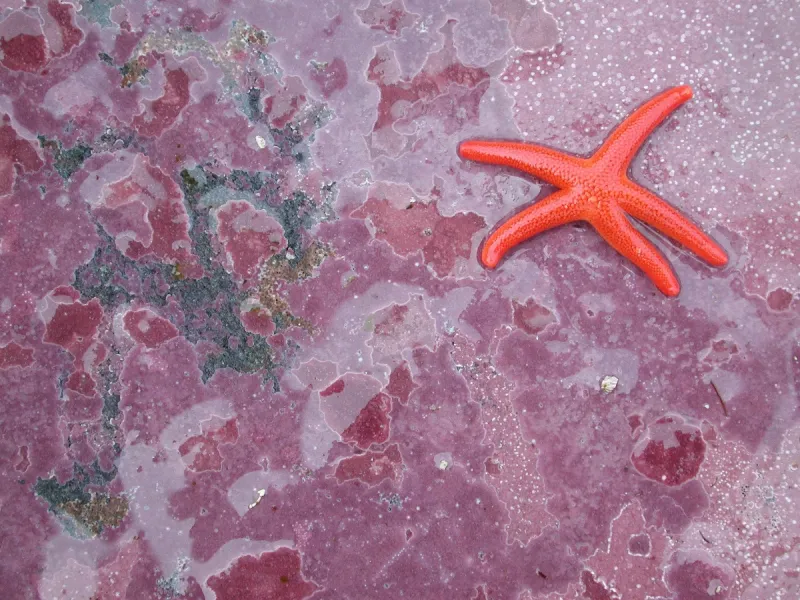Encrusting Pink Algae and a Seastar

Like pink paint, crustose coralline algae covers the surface of the rock in a thin layer. The algae secretes calcium carbonate between its cell walls, creating a hard surface wherever it grows that cements coral reefs together. This hard surface is also a preferred home for the larvae of coral and other invertebrates (such as abalone)—and for many species of bacteria. Smithsonian scientist Jennifer Sneed discovered that one species of bacteria living on coralline algae sends out a chemical signal to coral larvae swimming nearby to call them to their home. Read more at the Ocean Portal blog.

